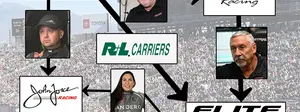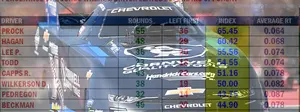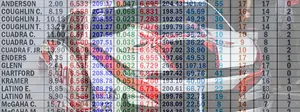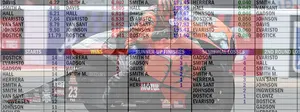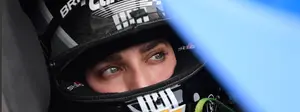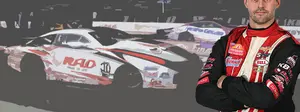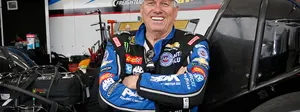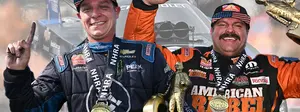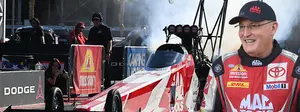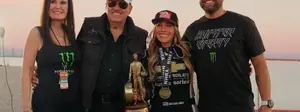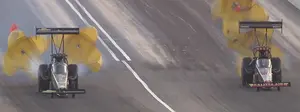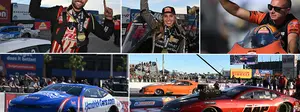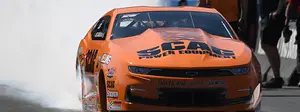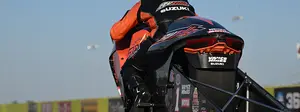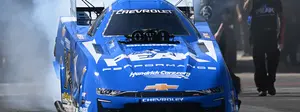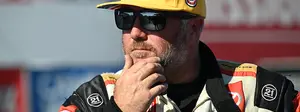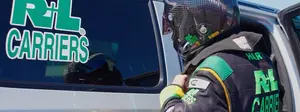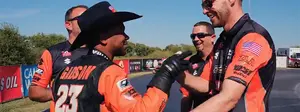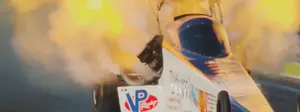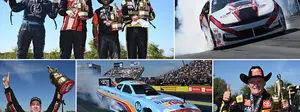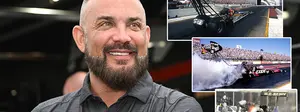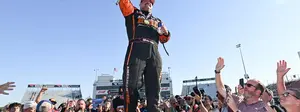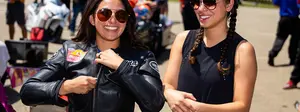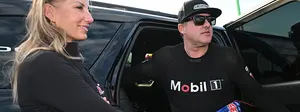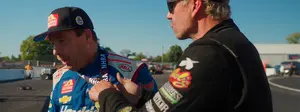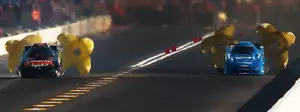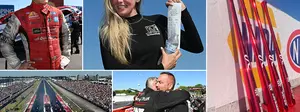

Factory X presented by Holley; What we’ve learned so far
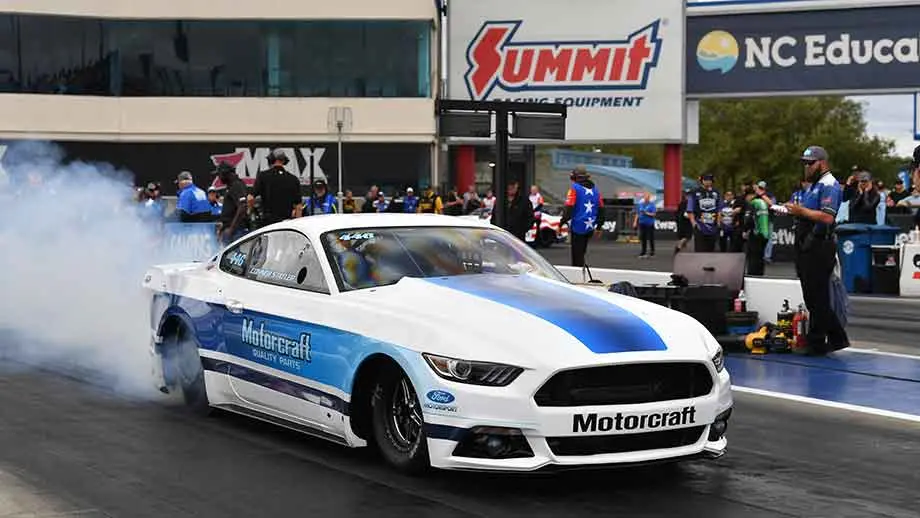
With three offical races in the books, the brand-new Factory X presented by Holley class has already provided a lot of thrills and a few twists and turns.
Admittedly, Factory X presented by Holley has been a long time coming, but so far, it’s been worth the wait. The exciting new class, which combines supercharged engines, manual transmissions, and lightweight factory appearing modern muscle cars, was officially launched during the 2021 PRI Show in Indianapolis.
For a variety of reasons, NHRA fans did not get to actually see a Factory X car on the racetrack until earlier this summer when five-time Super Stock world champ Greg Stanfield debuted his Rod Shop Camaro to rave reviews while making exhibition runs at the Summit Racing Equipment NHRA Nationals in Norwalk.
Two months later, the Dodge Power Brokers NHRA U.S. Nationals featured the first actual competition in Factory X, and Stanfield made history by earning the class’s first win. He was joined at the event by past Comp racer Jim Cowan in his Camaro, longtime Pro Stock driver Chris Holbrook with his new Varsity Ford Mustang, and the Blackbird X Challenger of Geoff Turk, who enlisted 2012 NHRA Pro Stock champ as his driver after being injured in a testing accident.
A second event in Charlotte and the recent NHRA Midwest Nationals produced equally exciting outcomes. Stanfield won in Charlotte and ran 7.044 in the process. At World Wide Technology Raceway, Johnson claimed his first NHRA victory since the 2016 season when he topped Holbrook in the final. Johnson also produced a 7.046 run and broke open the Jesel 200-MPH Club with a pair of 202-mph runs.
So, nearly two years after the initial Factory X announcement, here’s what we’ve learned so far.
FACTORY X CARS ARE QUICKER AND FASTER THAN MANY EXPECTED

As noted earlier, it took just two races for the Jesel 200-MPH Club to welcome its first member as Allen Johnson topped the double-century mark last weekend at the NHRA Midwest Nationals near St. Louis to earn a $10,000 bonus. Johnson made a 202.55-mph run in qualifying and backed it up with a 202.27 in the final. Honestly, Johnson’s performance should not be much of a surprise because car owner Turk topped 197 during early testing. At one point or another, most of the other Factory X cars have run in the mid 190-mph range, so it likely won’t be long before the Jesel 200-MPH Club welcomes more members.
As for elapsed times, the quickest official (non-testing) run for a Factory X car is Stanfield’s 7.044, while Johnson ran 7.046, and Holbrook ran 7.077, which means the six-second zone is going to be breached in fairly short order.
INITIALLY, THERE IS PARITY IN THE CLASS

In Indianapolis and Charlotte, Stanfield clearly had the best car and easily won both races, which seemed to provide the GM entries with an early advantage. Turk and Johnson countered with their dominant win in Madison, Ill. The Blackbird X team made big gains between the two events, due in large part to a test session where they enlisted current Funny Car driver Alex Laughlin as a substitute driver. Given their 202-mph speed, the Dodge would appear to have the upper hand right now, but it’s also worth noting that with just five cars currently running, there is a very random sampling when it comes to performance.
As Holbrook has shown with his 7.07 run, the Ford combination is also quite strong. Holbrook’s Cobra Jet entry in the Flexjet NHRA Factory Stock Showdown is one of the quickest cars in the class, and because the engine rules for both classes are nearly identical, it stands to reason that he’s going to be in the thick of the battle.
FACTORY X CARS ARE CHALLENGING TO DRIVE

Greg Stanfield has raced in every class from Stock to Pro Stock and been successful in all of them, so he knows a thing or two about driving a race car. When he made his first runs in Norwalk, Stanfield noted that driving a Factory X car was a unique experience. While they are roughly a half-second and 10 mph slower than a Pro Stock car, Factory X engines produce far more torque because they are supercharged. For that reason, the chassis and clutch set-up differ greatly from Pro Stock to Factory X, and the same goes for driving technique. The Factory X cars are also limited to a 10.5-inch-wide rear tire, which presents its own set of challenges, and with their strict adherence to stock body dimensions, the aerodynamics of a Factory X car are also quite different than those in Pro Stock.
THERE IS ALREADY DIVERSITY IN FACTORY X

It’s not a coincidence that the first official Factory X event featured four cars and also included at least one example of the three currently eligible vehicles from Ford, Chevrolet, and Dodge. And, as noted earlier, each of them has been competitive in the early stages of the class.
The NHRA Tech Department continually monitors the performance of every class, including Factory X, and at some point, they will almost certainly issue parity adjustments ruling in order to maintain the close side-by-side competition that fans crave. We likely haven’t reached that point yet.
FANS LOVE FACTORY X

This was never going to be a sticking point as fans have long asked for a true “doorslammer” class where the cars look like actual street cars. At the 2022 PRI Show, Turk’s Blackbird X was prominently displayed in the NHRA booth, and it was easily one of the most popular cars in the show, drawing a big crowd each day. The same goes for Stanfield’s debut in Norwalk and the events in Indy, Charlotte, and Madison, where the Factory X pits were a very busy place.
It also helps that the Factory X teams have taken the lead when it comes to honoring tradition. Stanfield's entry is back by the legendary Rod Shop team, and the new Ford Mustang of Stephen Bell pays homage to 10-time Pro Stock champ Bob Glidden, while Holbrook's Ford has the "Instant Action" moniker that has adorned the family race cars for decades.
Fortunately for fans of Factory X, there are more entries on the way, and the class is scheduled to pursue a championship in 2024. Conservative estimates have perhaps a dozen or more cars ready by the 2024 Gainesville season opener, and it’s likely the class will continue to grow from that point forward.























